About the Film
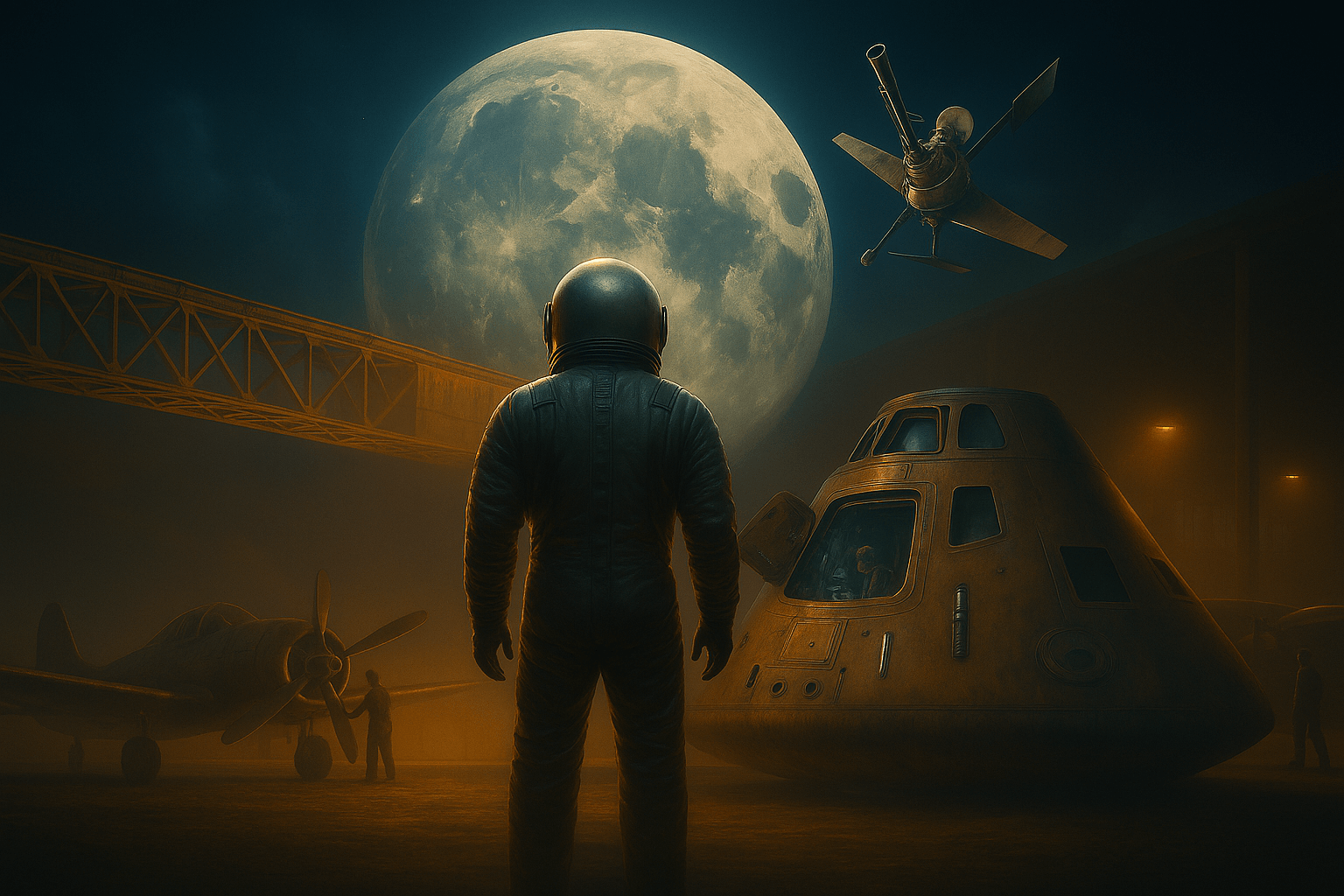
Before The Moon is a feature-length documentary that uncovers the hidden story of how America reached the stars — beginning not in Houston or Cape Canaveral, but in a quiet research base in Warminster, Pennsylvania. Long before rockets roared skyward, Bucks County’s inventors, engineers, and test pilots were laying the technological groundwork for the Space Age.
At the center of this legacy was the Naval Air Development Center (NADC), a Cold War research hub where flight systems, guidance technologies, life-support innovations, and the world’s largest and most powerful human centrifuge reshaped our understanding of human endurance. Here, future astronauts like Neil Armstrong, John Glenn, and Buzz Aldrin pushed their bodies to the limit while NADC’s laboratories pioneered many of the tools and techniques that made crewed spaceflight possible.
From these Pennsylvania breakthroughs, the story flows south to NASA’s Johnson Space Center (JSC) and Kennedy Space Center (KSC), where engineers and mission controllers transformed Warminster’s research into operational missions. Through rare NASA archives, new oral histories, and never-before-seen footage, Before The Moon connects the quiet innovation of NADC with the high-stakes environment of Mission Control.
Blending history, technology, and human courage, Before The Moon reveals how a network of Pennsylvania innovators helped build the foundation for NASA’s greatest achievements — and how their legacy continues to inspire the explorers of tomorrow.
Aviation Innovation in Bucks County
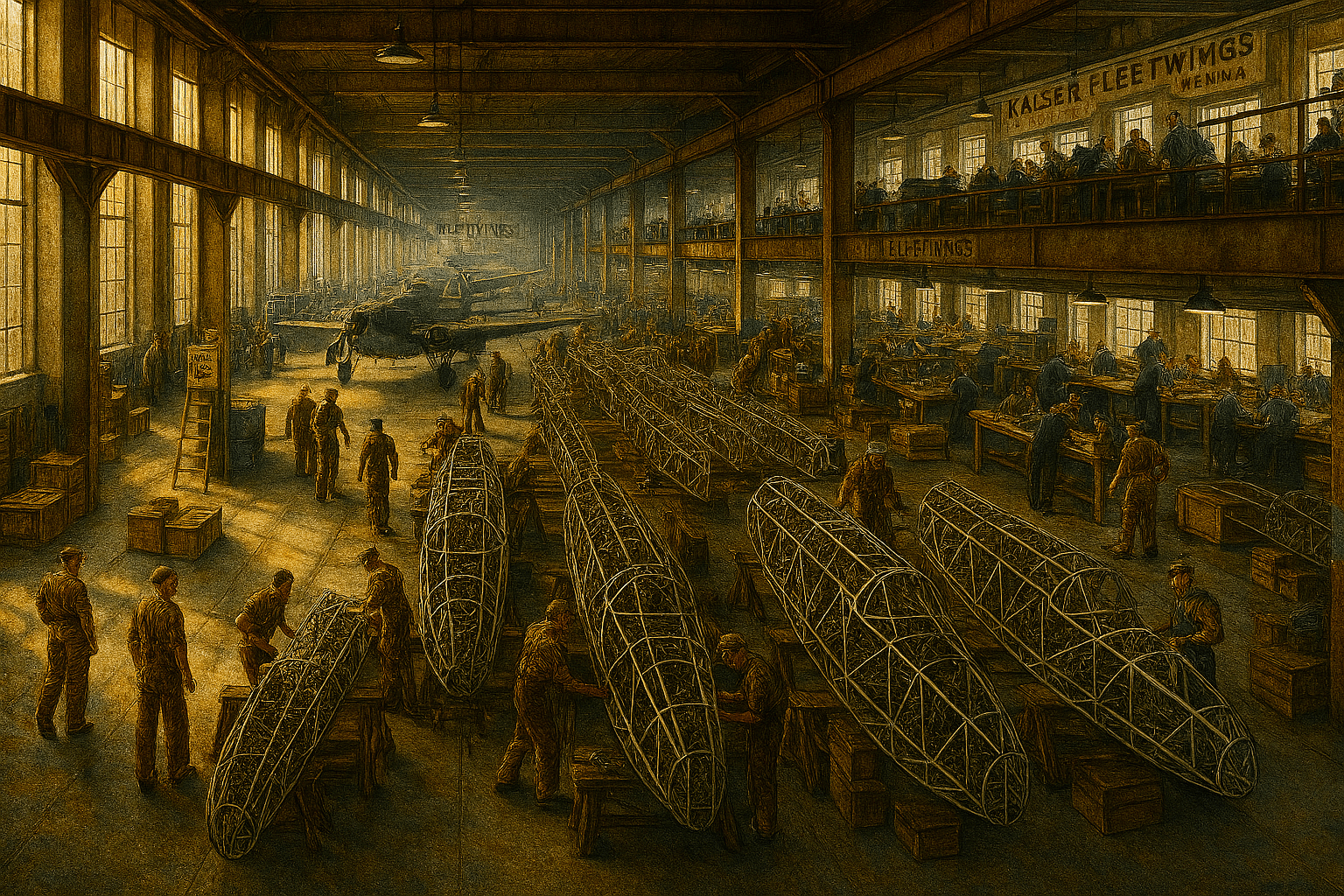
Pennsylvania once stood at the forefront of American aerospace manufacturing. Companies like Keystone Aircraft Corporation helped lay the foundation for modern aviation. Keystone briefly employed a young James McDonnell, who would go on to found McDonnell Aircraft and design both the F-4 Phantom and Mercury/Gemini spacecraft. Fleetwings (later Kaiser-Fleetwings) operated in Bristol, producing stainless steel aircraft and, in 1960, the launch canister for Echo 1, the satellite that enabled the first satellite voice transmission - President Eisenhower's.
During World War II and into the Space Race, Lavelle Aircraft Corporation became a critical subcontractor for NASA. They built key components for the TIROS weather satellites, Telstar, Ranger 7, and even parts of the Apollo Lunar Module and life support systems used during the dramatic Apollo 13 mission. Meanwhile, Rohm and Haas, another Bucks County-based company, manufactured Plexiglas which was used in military aircraft during World War II and found many other industrial and consumer applications.These industrial pioneers turned the Philadelphia suburbs into a hidden engine of American aerospace ingenuity.
The Naval Air Development Center
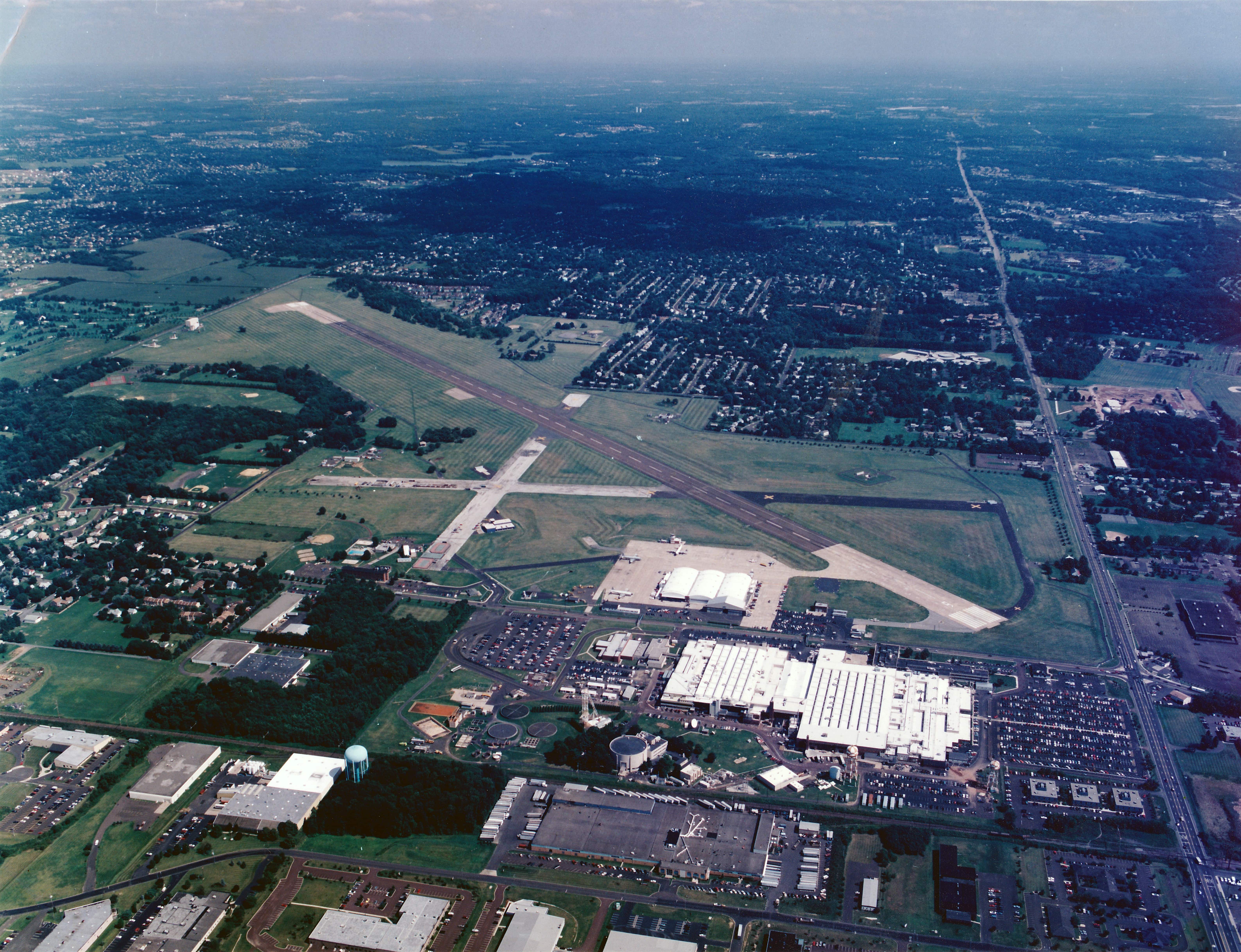
Born from the ashes of the troubled Brewster aircraft plant after World War II, the Warminster base was transformed by the U.S. Navy into the Naval Air Development Center—an experimental campus where ideas moved quickly from sketch to runway. Here, engineers and scientists drawn from places like MIT, the Brooklyn Navy Yard, and the Philadelphia Navy Yard converged to solve the hardest problems in naval aviation and emerging aerospace.
Across more than a hundred buildings, teams worked on everything that kept aircraft flying and crews alive: radar and sonar that could see over the horizon and beneath the waves; guidance and control systems for pilotless aircraft (drones); navigation and communications that evolved into early satellite tracking and the technologies that helped pave the way for GPS. Specialized facilities—from a deep-water quarry for sonobuoy testing to antenna ranges, ejection towers, and electro-optics labs—made NADC a self-contained proving ground for the Cold War fleet.
Out of this ecosystem came innovations that quietly reshaped modern flight: ejection systems that pulled pilots to safety, flight data recorders that preserved the story of every mission, advanced simulators, and medical research that defined how much stress the human body could endure. The Johnsville Centrifuge, rising at the heart of the base, became the most visible symbol of that ambition—linking Warminster’s naval laboratory to NASA’s first astronaut corps and to the next chapter of American spaceflight.
The Johnsville Centrifuge
Where the Limits of Human Flight Were Tested

Hidden in the heart of Warminster, Pennsylvania stood a machine so advanced it could simulate the crushing force of a rocket launch as a "dynamic flight simulator" and proved integral for training of Mercury, Gemini and Apollo astronauts to survive the rigorous journey to space. Funded by the Navy, the Johnsville Centrifuge, the largest and most powerful human centrifuge in the world, provided critical acceleration training for America's leap into the cosmos.
At 180 tons, with a 50-foot arm capable of reaching 175 mph in just seconds, this marvel of engineering taught pioneers like Neil Armstrong, Buzz Aldrin, and John Glenn how to endure the rigors of liftoff and re-entry. It could deliver up to 40 Gs of acceleration force - more than enough to knock a person unconscious or worse. Instead, it forged them into astronauts.
Today, The Johnsville Centrifuge still stands as a monument to human endurance and ingenuity. Before we walked on the Moon - we trained in Warminster.
The Technology That Powered Missions
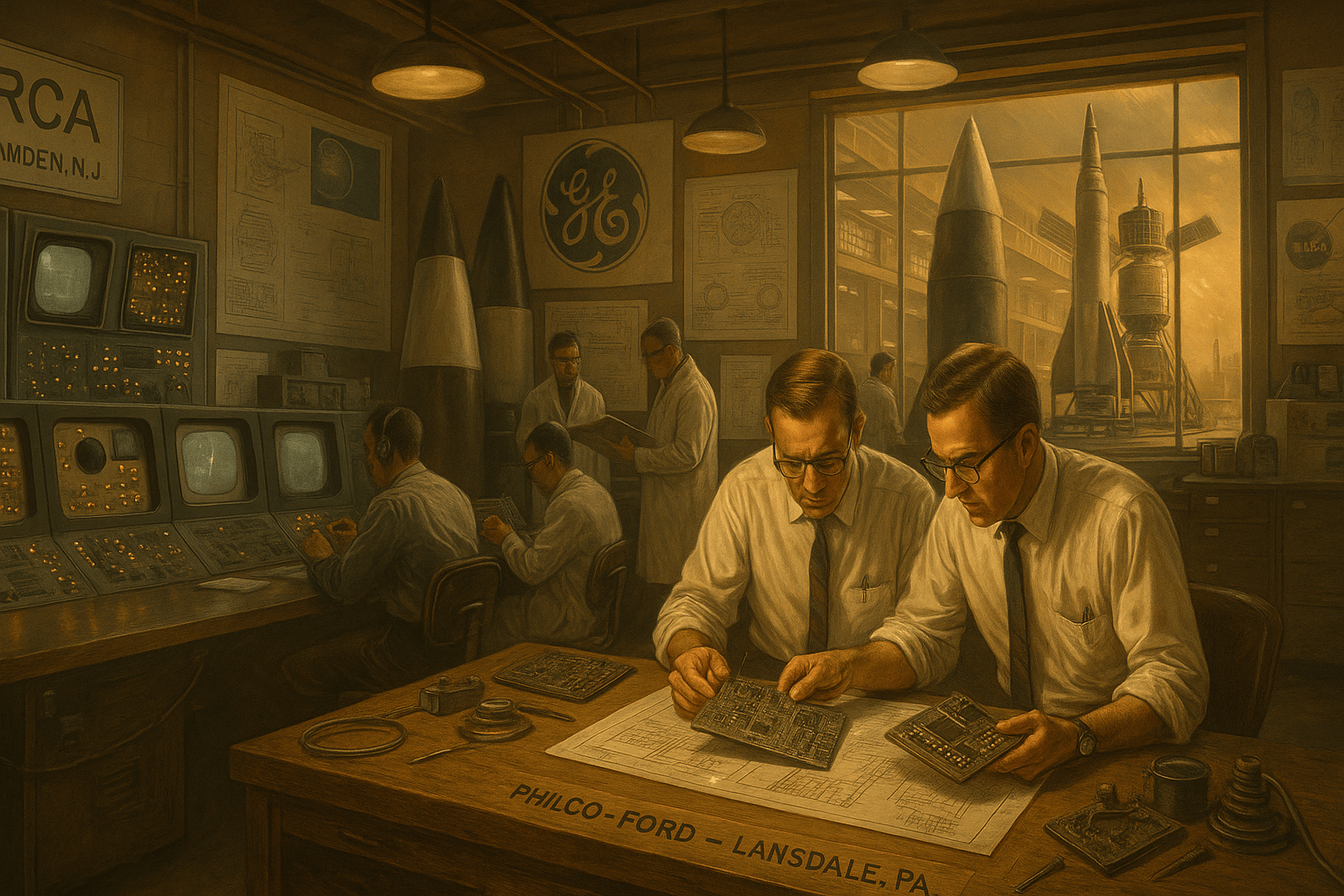
While astronauts trained for the physical demands of spaceflight in Warminster, nearby companies engineered the systems that made space travel possible. In Lansdale, Philco-Ford produced the integrated circuits for the Apollo Guidance Computer - one of the earliest examples of modern computing in space. Just across the river in Camden, RCA pioneered satellite communications and telemetry hardware used by NASA throughout the Gemini and Apollo programs. These advances in electronics and control systems helped turn complex mission planning into achievable flight trajectories, docking procedures, and lunar landings.
Beyond spacecraft, the region also played a vital role in the development of Cold War missile and propulsion systems. The Naval Air Material Unit (NAMU) in Northeast Philadelphia contributed to guided missile research, while General Electric's Missile and Space Division, which began in Philadelphia and later moved to King of Prussia, worked on reentry vehicles, propulsion, and space launch systems. These Cold War-era technologies laid the groundwork for the digital precision that would come to define the Space Shuttle era—and they all trace back to labs and assembly lines just a short drive from Warminster.
And in a moment of crisis that defined NASA ingenuity, a Bucks County innovation helped save the crew of Apollo 13. When an oxygen tank explosion crippled the spacecraft, engineers in Houston worked with astronauts to jury-rig a life-saving air filter from parts aboard the ship. At the heart of that solution was a canister frame manufactured in Newtown by Lavelle Aircraft Corporation. Originally built to scrub carbon dioxide in the lunar module, Lavelle’s component became a critical part of the emergency workaround - allowing the crew to breathe safely until splashdown. That a local shop floor contributed to one of spaceflight’s most heroic rescues reminds us: sometimes, the smallest parts make the biggest difference.
The People Who Made Space Possible
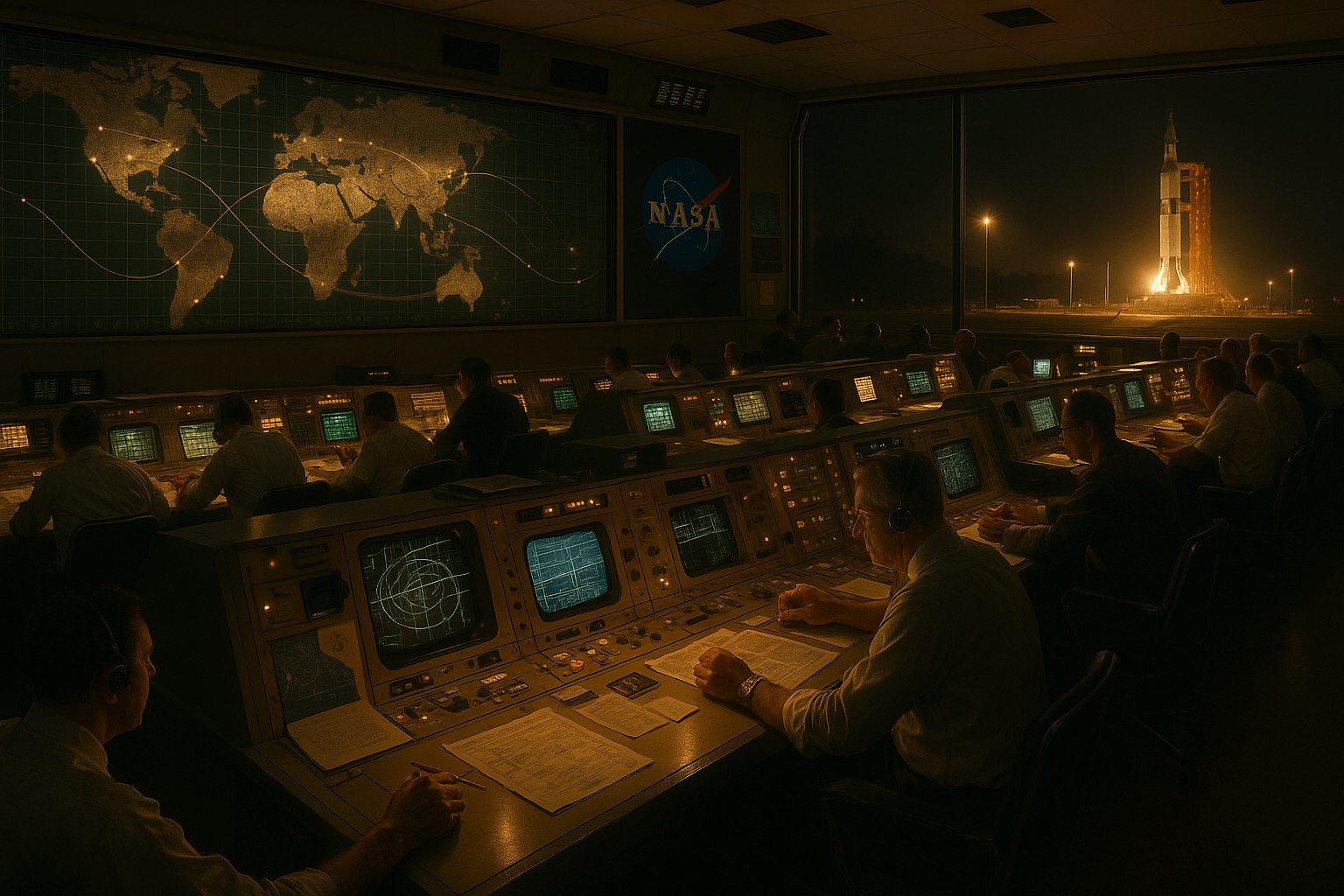
While Pennsylvania's labs and factories built the hardware that powered America's first steps into space, the next chapter unfolded in Houston and Cape Canaveral — where thousands of engineers, scientists, and mission controllers turned those innovations into action. At NASA's Johnson Space Center (JSC), the nation's brightest minds in flight dynamics, spacecraft systems, and human performance carried forward the research begun in Warminster's Naval Air Development Center (NADC). Many of the same technologies, test procedures, and life-support systems first pioneered in Bucks County evolved here — refined and expanded to meet the demands of Apollo, Skylab, and the Space Shuttle.
Inside Mission Control, engineers who once studied centrifuge data or flight instrumentation in Pennsylvania now worked side by side with astronauts to solve problems in real time. From guidance systems to trajectory modeling, from pressure suits to spacecraft reentry dynamics, these behind-the-scenes teams transformed theoretical research into practical survival. At Kennedy Space Center (KSC), technicians and launch specialists carried that same spirit to the launchpad, ensuring that every system was tested, calibrated, and ready for liftoff.
The collaboration between the Philadelphia region and NASA's southern centers formed an unbroken chain of ingenuity — a partnership that spanned states, generations, and missions. Before The Moon reveals how the groundwork laid in Bucks County ignited the breakthroughs in Houston and Cape Canaveral, and how these unsung heroes—engineers, scientists, and problem-solvers—built the foundation for America's success in space.
Help Launch the Greater Philadelphia Aerospace Hall of Fame
The Greater Philadelphia Aerospace Hall of Fame will celebrate the region's remarkable contributions to space and aviation history—from test pilots and engineers to astronauts and aerospace innovators. Your support helps:
- Honor pioneering individuals, corporations, and organizations
- Establish a permanent display in Warminster, PA
- Host a public enshrinement banquet starting in 2026
- Create a digital Hall of Fame and interactive Aerospace Heritage Trail
- Inspire the next generation through stories and educational outreach
Join us in building a legacy worthy of the region that trained Mercury astronauts, and helped launch America into space. Let's make history visible—and unforgettable.

Donations to support the production of the film are handled through the King's Highway Foundation, a nonprofit dedicated to preserving American History. Your contribution ensures this story is not only told—but remembered.
